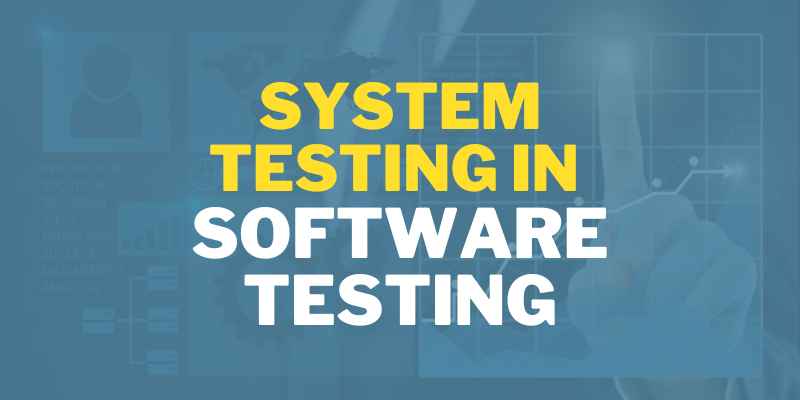
What is System Testing?
System testing is a sort of testing that examines the completeness and integration of a software product. The end-to-end system specifications are evaluated using a system test. In most cases, software is merely one component of a larger computer system. Eventually, the programme will be integrated with a variety of software and hardware platforms. System testing is a set of tests with the primary goal of putting a computer-based system through its paces. Here in this blog, we will discuss System Testing. To learn more about types of Software Testing, join Software Testing Course in Chennai at FITA Academy.
a) End to End Testing
It entails putting an entire application environment through its paces in a scenario that closely resembles real-world use, such as connecting with a database, leveraging network connections, or interacting with other hardware, applications, or systems as needed.
A tester, for example, is evaluating a pet insurance website. Buying an insurance policy, LPM, tag, adding another pet, updating payment card information on users’ accounts, updating user address information, and receiving order confirmation emails and policy documents are all examples of end-to-end testing.
b) Black Box Testing
Blackbox testing is a software testing technique in which the internal structure, design, or code of the system under test is not known. Only the input and output of test objects should be the focus of testers.
Here you can find detailed information on the benefits, drawbacks, and forms of Black Box testing.
c) Smoke Testing
Smoke testing is used to ensure that the system’s basic and critical functionalities are functioning properly at a high level.
When the development team releases a new build, the Software Testing team validates it to ensure there are no severe flaws. The testing team will check that the build is stable before moving on to a more extensive level of testing.
For example, The tester is evaluating a website for pet insurance. The application’s fundamental and crucial tasks include purchasing an insurance policy, adding another pet, and providing references. Before undertaking any in-depth testing, smoke testing for this website confirms that all of these functionalities are running properly.
Software Testing Online Course will enhance your technical skills in the Software Testing domain.
d) Sanity Testing
Sanity testing is done on a system to ensure that new features or bug patches are working properly. A stable build is used for sanity testing. The regression test is a subset of this test.
A tester, for example, is evaluating a pet insurance website. The discount for purchasing coverage for a second pet has changed. Then just the buying insurance policy module is subjected to sanity testing.
e) Happy path Testing
The goal of Happy Path Testing is to successfully test an application on a positive flow. It makes no attempt to detect negative or incorrect circumstances. Only legitimate and positive inputs are used to generate the intended result by the application.
f) Monkey Testing
A tester performs monkey testing, thinking that if a monkey uses the application, the monkey will enter random input and values without knowing or understanding the application.
Monkey testing’s goal is to see if an application or system crashes by giving it random input values/data. Monkey testing is done at random, with no test cases scripted and no knowledge of the system’s full functionality required.
Conclusion:
The System Testing types listed above are only a subset of testing. Here, in this blog, we have discussed types of System testing, and to learn more about Test Management in Software Testing, join Software Testing Course in Coimbatore.
Refer to Software Testing Books for beginners to get deep knowledge of Software Testing.